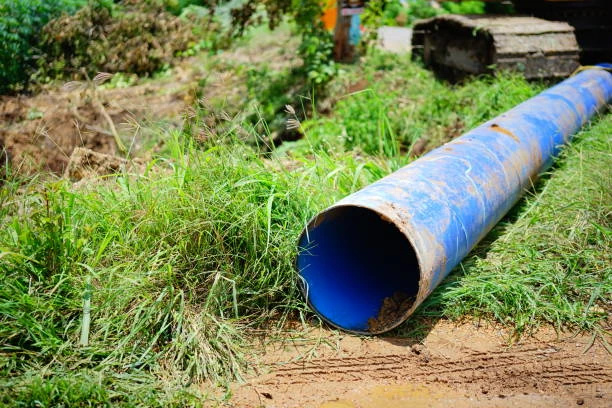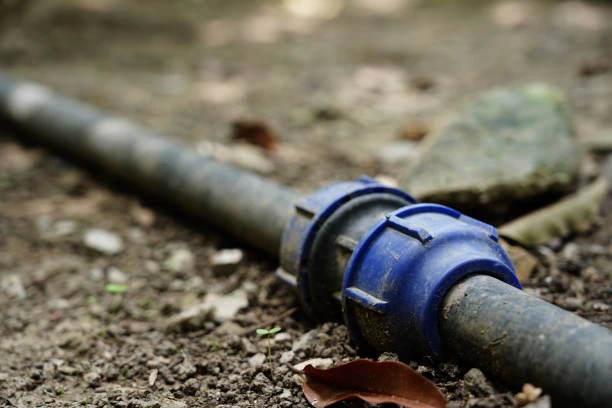Introduction
When it comes to selecting materials for infrastructure projects, the choice between concrete or plastic pipes can significantly impact the environment. Both materials have their advantages and drawbacks, and understanding their ecological implications is crucial for sustainable development. This article explores the environmental aspects of concrete and plastic pipes, their lifecycle impacts, and which material emerges as the more eco-friendly option.
Overview of Concrete and Plastic Pipes
Concrete Pipes
Concrete pipes have been a staple in construction for decades. Made primarily from cement, aggregates, and water, these pipes are known for their strength and durability. They are commonly used for stormwater drainage, sewage systems, and various infrastructure projects.
Plastic Pipes
Plastic pipes, primarily made from materials like polyvinyl chloride (PVC), polyethylene (PE), and polypropylene (PP), have gained popularity due to their lightweight nature and resistance to corrosion. They are widely used in plumbing, irrigation, and gas distribution systems.
Ecological Impacts of Concrete Pipes
Resource Extraction
The production of concrete pipes begins with the extraction of raw materials, including sand, gravel, and limestone. This process can lead to:
- Habitat Destruction: Mining for aggregates can disrupt local ecosystems.
- Carbon Emissions: The extraction and transportation of materials contribute to greenhouse gas emissions.
Production Process
The manufacturing of concrete involves mixing cement, water, and aggregates, which requires energy. Key points include:
- High Energy Consumption: Cement production is energy-intensive and accounts for approximately 8% of global CO2 emissions.
- Water Use: Significant water is needed for mixing and curing concrete, which can strain local water resources.
Lifecycle Considerations
Concrete pipes have a long lifespan, often exceeding 50 years. Their durability reduces the need for frequent replacements, which can be ecologically beneficial. However, at the end of their lifecycle, concrete is challenging to recycle and typically ends up in landfills.

Ecological Impacts of Plastic Pipes
Resource Extraction
Plastic pipes are derived from petroleum-based products. The ecological impacts include:
- Fossil Fuel Dependency: The extraction and refining of oil contribute to greenhouse gas emissions.
- Environmental Risks: Oil spills and habitat disruption are potential risks associated with fossil fuel extraction.
Production Process
The manufacturing of plastic pipes also has its environmental challenges:
- Chemical Emissions: The production process can release harmful chemicals into the environment, affecting air and water quality.
- Lower Energy Use: Compared to concrete, plastic pipes generally require less energy to manufacture, leading to lower carbon footprints.
Lifecycle Considerations
Plastic pipes typically have a lifespan of 50 years or more, similar to concrete pipes. However, their recyclability varies significantly:
- Recycling Challenges: While some plastic pipes can be recycled, many end up in landfills due to contamination and logistical difficulties.
- Microplastic Pollution: Improper disposal can lead to microplastics entering ecosystems, posing risks to wildlife and human health.
Comparative Analysis: Concrete vs. Plastic Pipes
Environmental Footprint
- Carbon Emissions: Concrete pipes have a higher carbon footprint due to the energy-intensive cement production process. In contrast, plastic pipes tend to have lower emissions during manufacturing.
- Resource Use: Concrete requires significant mineral resources, while plastic relies on fossil fuels, which are finite and have their own environmental consequences.
- Durability and Longevity: Both materials are durable, but concrete pipes may have an edge in longevity and resistance to certain environmental factors.
Recycling and Waste Management
- Concrete: While difficult to recycle, concrete can be crushed and reused as aggregate in new concrete or other construction applications.
- Plastic: Recycling rates for plastic pipes are low, and improper disposal can lead to environmental contamination.
Impact on Water Quality
- Concrete: Can leach lime, potentially affecting water quality, particularly in drinking water systems.
- Plastic: Some plastics may release chemicals over time, raising concerns about their impact on water quality and ecosystem health.
Case Studies and Real-World Applications
Successful Concrete Pipe Projects
Several municipalities have successfully utilized concrete pipes for stormwater management and sewage systems. These projects often highlight the durability and long-term cost-effectiveness of concrete infrastructure.
Innovative Plastic Pipe Solutions
Plastic pipes are increasingly being adopted in innovative applications, such as geothermal heating and cooling systems, due to their lightweight nature and ease of installation. However, the ecological concerns surrounding plastic waste remain prevalent.
Future Trends and Considerations
Sustainable Alternatives
The construction industry is exploring sustainable alternatives for both concrete and plastic pipes:
- Reinforced Concrete: Advances in materials science are leading to stronger, more sustainable concrete formulations.
- Bioplastics: Research into bioplastics derived from renewable resources could provide a more eco-friendly option for plastic pipes.
Regulatory and Consumer Trends
Growing environmental awareness is influencing regulatory frameworks and consumer preferences. As sustainability becomes a priority, manufacturers of both concrete and plastic pipes will need to adapt to meet these evolving demands.
Conclusion
When comparing the ecological impacts of concrete or plastic pipes, both materials have their strengths and weaknesses. Concrete pipes have a higher initial carbon footprint due to the energy-intensive manufacturing process but offer longevity and potential for recycling. Plastic pipes, while generally requiring less energy to produce, face significant challenges regarding waste and recycling.
Ultimately, the choice between concrete and plastic pipes should be guided by the specific requirements of a project, including environmental considerations, resource availability, and long-term sustainability goals. A balanced approach that considers the lifecycle impacts of both materials can lead to more eco-friendly infrastructure solutions.
FAQs
1. Which pipes last longer, concrete or plastic?
Both concrete and plastic pipes can last over 50 years, but concrete typically has a slight edge in durability against environmental factors.
2. Are plastic pipes recyclable?
Some plastic pipes can be recycled, but many end up in landfills due to contamination and logistical challenges.
3. What are the environmental impacts of concrete pipes?
Concrete pipes have a higher carbon footprint due to cement production and can lead to habitat destruction during raw material extraction.
4. How do concrete and plastic pipes affect water quality?
Concrete can leach lime, while some plastics may release harmful chemicals over time, affecting water quality.
5. What are sustainable alternatives to concrete and plastic pipes?
Innovations such as reinforced concrete and bioplastics are being explored as more sustainable options in the construction industry.


















